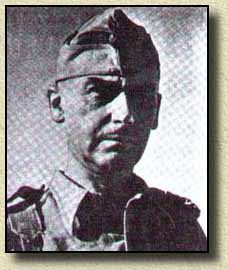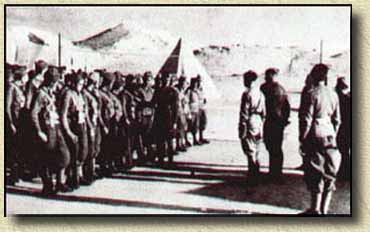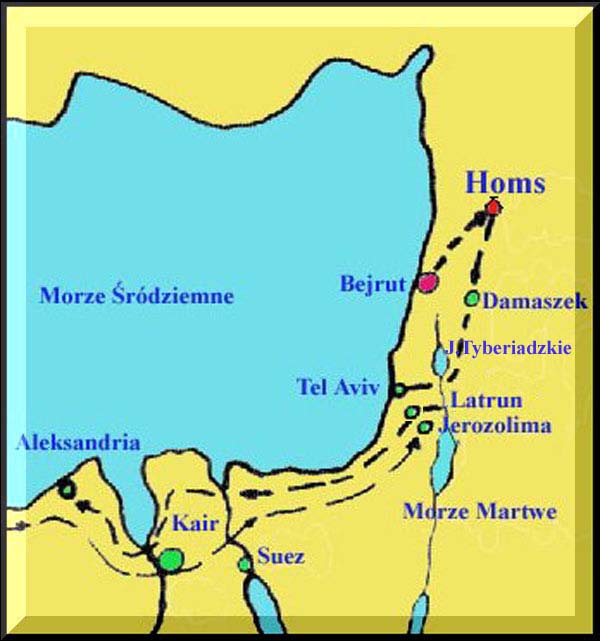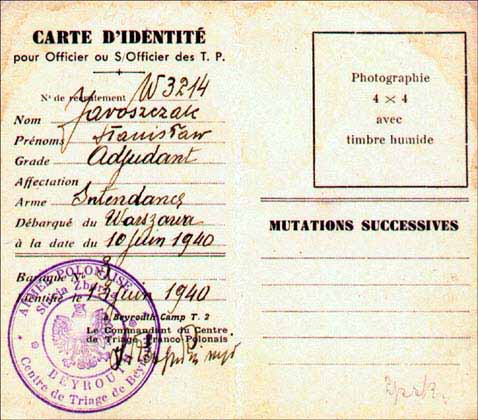|
|
The forming of Polish Carpathian Brigade.
Just after the September Campaign , in October 1939 the forming of Polish tactic group at least brigade was decided to appear on French teritory of Near East. Gen. Władysław Sikorski and the other Polish commanders and headquaters officers played an importrant part in it. Although in September 1939 gen. Sikorski was interested in Balcan way of offensive, becoming the Prime Minister (of the Polish Government) on 30-th September and then the Commander-in-chief on 7-th November, but he thought that Polish soldiers took part in French offensive defeating Germans from west to east. Unfortunately French headquaters didn't even take into consideration an idea like that. Despite of the aim of concentrating the main group of Polish soldiers in France on 19-th December 1939 gen. Sikorski asked gen. Gamelin to form Polish unit on French teritory of Near East. Following Polish ambassador Michał Sokolnicki and attache col. Tadeusz Machalski trom Ankara who both suggested that Polish soldiers escaping from isolation camps in Romania and Hungary would be able to reach Beirut easier than Marsil. French headquaters confirmed the agreement quite quickly but it wasn't helpful in organisation at all. Gen. Gamelin and his officers weren't entusiastic towards Polish arrangaments. In fact they were trying to stop it claiming they had neither quaters nor eguipement for Polish Military Unit. Finally on 12-th April 1940 gen. Władysław Sikorski ordered formally the establishing of Polsih unit called Brygada Strzelców Karpackich in Syria with col. Stanisław Kopański in command .Col. Kopański flew to Beirut on 23-rd April (later on 6-th September 1940 he was promoted to general). The headquaters officers of 32 arrived on the same day with maj. Jerzy Zaremba in command. According to Polish-French agreement of 4-th January col. Kopański and his soldiers belongs to Polish Headquater , but from operational point of view they belongs to the French military forces called TOMO (Theatre d'Operation de Mediterraneen Orientale). Gen. Maxime Weygand who was regarded as one of the greatest French commanders of World War I was in command of it since 1939 . The previous camp of Foreign Legion near the town of Homs in Syria was decided as the first place of concentration for Polish Carpathian Brigade.

The commander of Carpathian Brigade gen. Stanisław Kopański.

Syria, the camp in Homs where Carpathian Brigade was formed in 1940.

The part of offensive route passed by the soldiers of Carpathian Brigade.
The first two hundred and fifty Polish officers and soldiers arrived from Constanca in Romania to Beirut on 27-th April 1940 . The French authorities suggested the establishing the camp in Homs after the 1-st May so some soldiers who had already been suppoused to stay in the Near East were sent to France again. Finally on 15 -th May the Polish ship called "Warszawa'' brought six hundred people on its way from Pireus to Beirut. On 21-st May a Greek ship "Patris'' hired by Polish authorities brought onother group of six hundred soldiers. On 25-th May "Warszawa" left about four hundred Polish people after its leaving Jugoslavian Split. The rest of volunteers arrived by Romanian ships. All of the people had to pass the concentration point in Beirut where they were all examinated by doctors and also their military ranks were veryfied. The soldiers of the new unit was a very interesting group of people. Tere were about 70 percent of those who udergone the September Campaign in 1939 and then escaped from Hungarian and Romanian isolation camps. There were also some of those who arrive stright from occupied Poland, passing closed borderlines and the rest of them coming from all over the world. For example the group of fourteen soldiers who arrived from the Polish colony in Charbin and the other group of several people of Polish roots but living in Arabia for generations including a Persian volunteer who didn't speak a world of Polish. Some Polish legionists from Foreign Legion also decided to join Polish Brigade. The Brigade was organized as a completly voluntary unit excluding officers . During the firts weeks the soldiers had to practice without any weapon or vehicles there weren't any. In the third decade of May they received old guns Label type at last. Soon after that the reconnaissance unit received also a few horses, but vehicles received were all wrecked. Considering the organisation of brigade , it consisted of:
(1) brigade headquaters
(2) two infantry regiments , two 'baons' - each 'baon' consisted of three companies and one machine gun company.
(3) one 'dyon' of artilery
(4) one reconnaissance 'dyon'
(5) the other services
Col. Walery Peszek and col. Antoni Cieszkowski were in command of infantry regiments. Col. Stanisław Gliwicz was in command of artilery and maj. Władysław Bobiński in command of lancers. The commander of TOMO gen. Weygand left on 19-th May 1940 because of fatal military situation in France then he became commander-in-chief. Following gen. Gamelin , unfortunately he was neither good commander nor stronger man. On the 19-th June 1940 the message of French capitulation reached the camp of Homs. Col. Kopański informed Polish soldiers that "the Brigade won't surrender under any condition". The next day he went to Beirut to meet gen. Mittelhauser who replaced gen. Weygand. Gen. Mittelhauser assured him saying " in case of the negative influence of French - German agreement he also wouldn't give up and The Polish Brigade will be able to fight with French Army against the enemy together." On the same day 20-th June the radio message from Ankara was received . It contained information that gen. Sikorski ordered the withdrawal of Polish soldiers to Britain. On the next day col. Kopański asked by radio gen.Sikorski to confirm his order because gen.Mittelhauser assured him of his willingness to fight. On 24-th June gen. Sikorski allowed to stay French command until they give up. Jn case of their surrender the brigade should came under British command. At the same time the headquaters of TOMO were involved in deep crisis which divided their commanders into two groups. Gen. Mittelhauser wanted to follow the French authorities instructions , on the other hand some of his officers including col. Rene de Larminat didn't want to give up. On 26-th June 1940 gen. Mittelhauser finally obeyd the orders of Vichy Government. Jn spite of that the decision of evacuating Carpathian Brigade to Palestine which was occupied by British Army was taken. Col. Rene de Larminat not only helped the Brigade to organize a railway transport but also arranged the supplies as: horses, weapon, vehicles, machine guns . Col. Kopański ordered the concentration og group of soldiers during their evacuation to Palestine in case of any attack. The first group left Beirut on 27-th June according to TOMO scedue. The things changed the next day as col. Larminat wad dismissed and the Polish were objected to receive extra tanks which were previously promised. After col. Kopański's appeal to gen. Mittelhauser the Polish commander was ordered to stay in Beirut as a warranty of complete disarmament of the Brigade. After a long talk general recalled his order but asked the Polish to give back anti-tank weapon. It was supposed to take place on the borderline post of Palestine and col. Kopański wasn't allowed to leave Beirut earlier. The next day general changed his mind being afraid of Polish soldiers and folowing the suggestions of his officers . Finally col. Kopański left Beirut and the weapon didn't have to be given back. As a result from 27-th June the whole Brigade was evacuated by railway to the station Rayak and then by a mountain train via Damascus to the place called Samakh which was situated on the bank of Lake Tiberias (Sea of Galilee) in Palestine.

Identification Cards received by Polish soldiers at the concentration point in Beirut, where all of them had to undergo the health check and rank veryfication.
The units of Polish Brigade arrived to Samakh with all their horses and other helpful animals carring the suplies with the equipment and the amunition. Some of the French soldier who didn't want to give up joined the Polish ones and also arrived there. The British were very astonished by the number of Polish soldiers and officers as they were expecting only a small group of disorganized people. Coming to Palestine Carpathian Brigade consisted of thirty-four hundred soldiers and four hundred officers.
Designed by: © P.Jaroszczak - Przemyśl 1999.